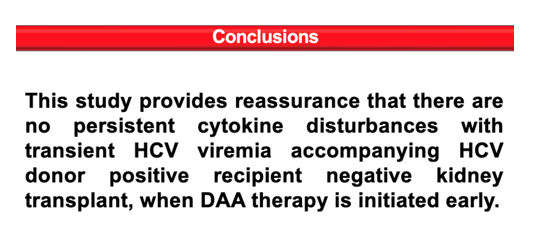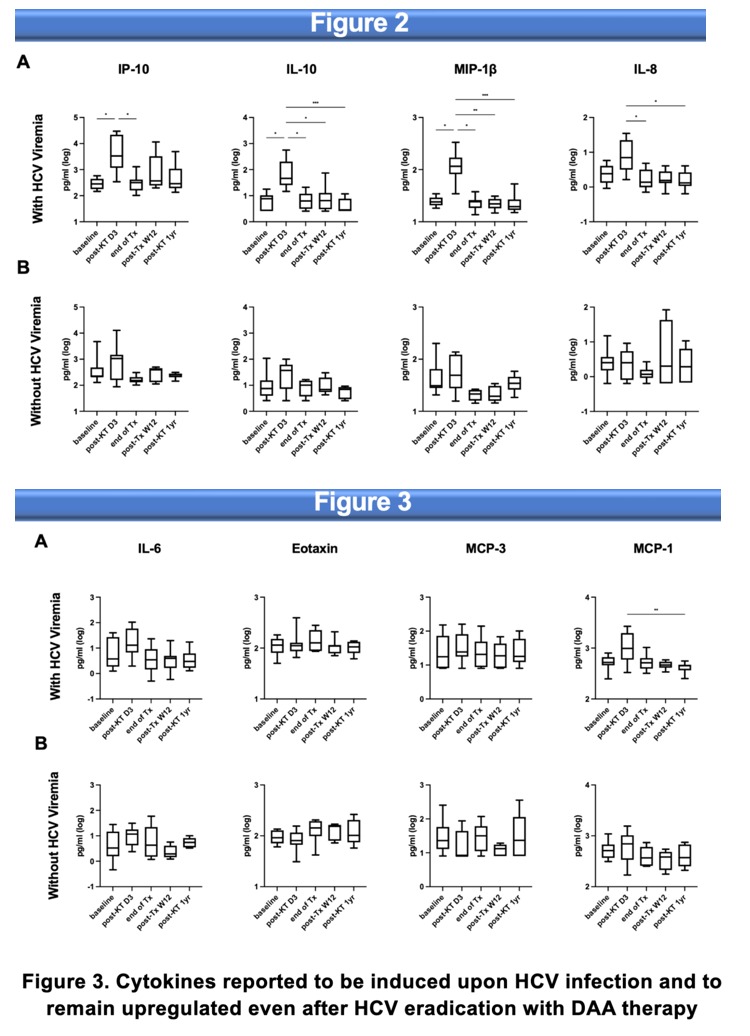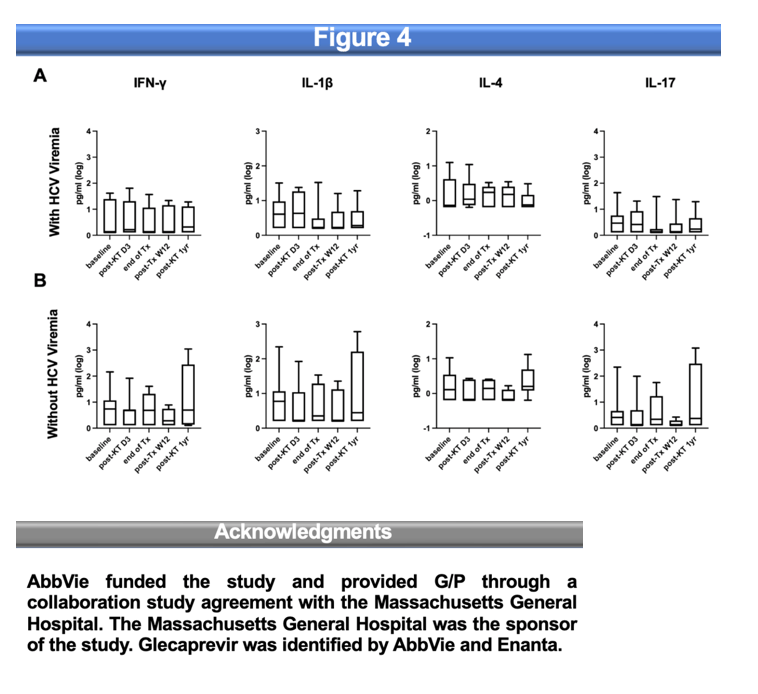 |
 |
 |
| |
EARLY INITIATION OF GLECAPREVIR AND PIBRENTASVIR AFTER TRANSPLANTATION OF HCV- VIREMIC INTO HCV- UNINFECTED KIDNEY TRANSPLANT RECIPIENTS RAPIDLY NORMALIZES HCV- INDUCED ALTERATIONS IN THE SOLUBLE INFLAMMATORY MILIEU
|
| |
| |
AASLD 2022 Nv 4-8
Myung- Ho Kim, Massachusetts General Hospital, Meghan E. Sise, Massachusetts General Hospital and Harvard Medical School, David S Goldberg, Division of Digestive Health and Liver Diseases, University of Miami School of Medicine, Robert J. Fontana, Division of Gastroenterology and Hepatology, University of Michigan, Jens Kort, Abbvie, Rita R. Alloway, University of Cincinnati College of Medicine, Christine Durand, Johns Hopkins School of Medicine, Robert S. Brown Jr., Division of Gastroenterology and Hepatology, Weill Cornell Medicine, Josh Levitsky, Division of Gastroenterology and Hepatology, Northwestern University Feinberg School of Medicine, Jenna L Gustafson, Liver Center, GI Division, Massachusetts General Hospital and Harvard Medical School, Boston, Massachusetts, USA, Peter Reese, Hospital of the University of Pennsylvania and Raymond T. Chung, Gastrointestinal Unit, Massachusetts General Hospital

program abstract
Background: Direct acting antivirals (DAAs) have been demonstrated to be highly effective in curing hepatitis C virus (HCV) infection. Our group's multicenter study to transplant hepatitis C-i nfected kidneys (MYTHIC) observed that 100% of HCV- uninfected adults who received a kidney from an HCV- viremic deceased donor were cured of HCV with an 8- week regimen of cofor-mulated glecaprevir and pibrentasvir (G/P) initiated 2-5 days after transplant. Meanwhile, HCV-induced immune system alterations have been reported to last even after HCV eradication with DAAs.
The aim of this study was to determine whether HCV- viremic kidney recipients in the MYTHIC study experience a long- lasting imprint in the soluble inflammatory milieu that could affect long-t erm outcomes.
Methods: Plasma samples from the MYTHIC study (n=16) collected at baseline, day 3 post- kidney transplant (post- KT D3), the end of G/P treatment (end of Tx), 12 weeks after completing G/P (post- Tx W12), and 1- year post- kidney transplant (post- KT 1yr) were analyzed by multiplex immunoassay. We measured soluble markers that can be induced or downregulated during HCV infection in-cluding eotaxin, IL- 6, MCP- 1, MCP- 3, M- CSF, IL- 1β, IL- 4, IL- 7, IL- 17A, IFN- γ, FGF2, GROα, PDGF- AB/BB, MIP- 1β, IP- 10, IL- 10, IL- 8, IL12p40, IL- 18, IFNα2, TNF- β, and MIP- 1α . We stratified analysis based on HCV vi-remia in the early post- op period.
Results: Among patients with viremia at post- KT D3 (n=9), MIP- 1β (Figure), IP- 10, IL- 7, and IL- 10 were significantly elevated from baseline. However, over the subsequent visits (after beginning G/P treatment) there was a rapid, dramatic reduction back to baseline levels. Among 7 patients not viremic at post- KT D3, the cytokine levels did not sig-nificantly change.
Conclusion: HCV- uninfected adults who received a kidney from an HCV- viremic deceased donor and were treated with early G/P experienced only transient alterations in the inflammatory milieu. These data provide reassuring evidence that there are no persistent cytokine disturbances with transient HCV viremia accompanying D+R- KT.



|
| |
|
 |
 |
|
|